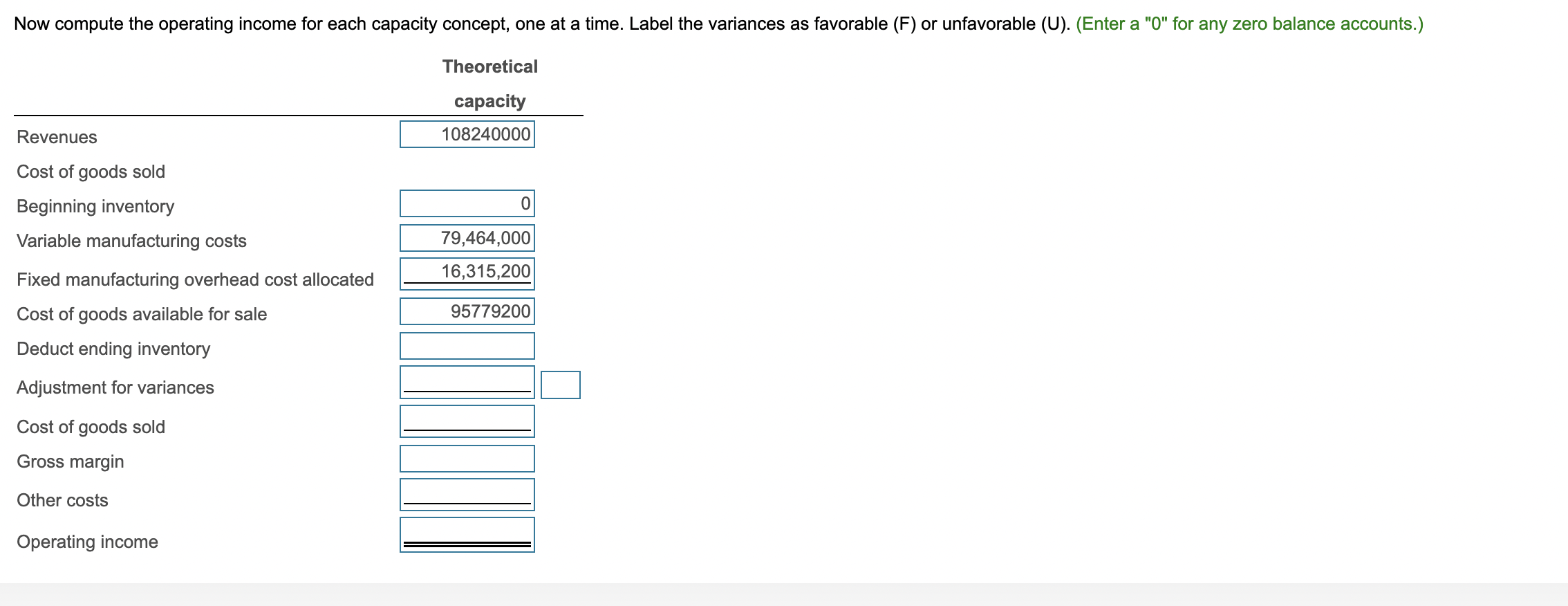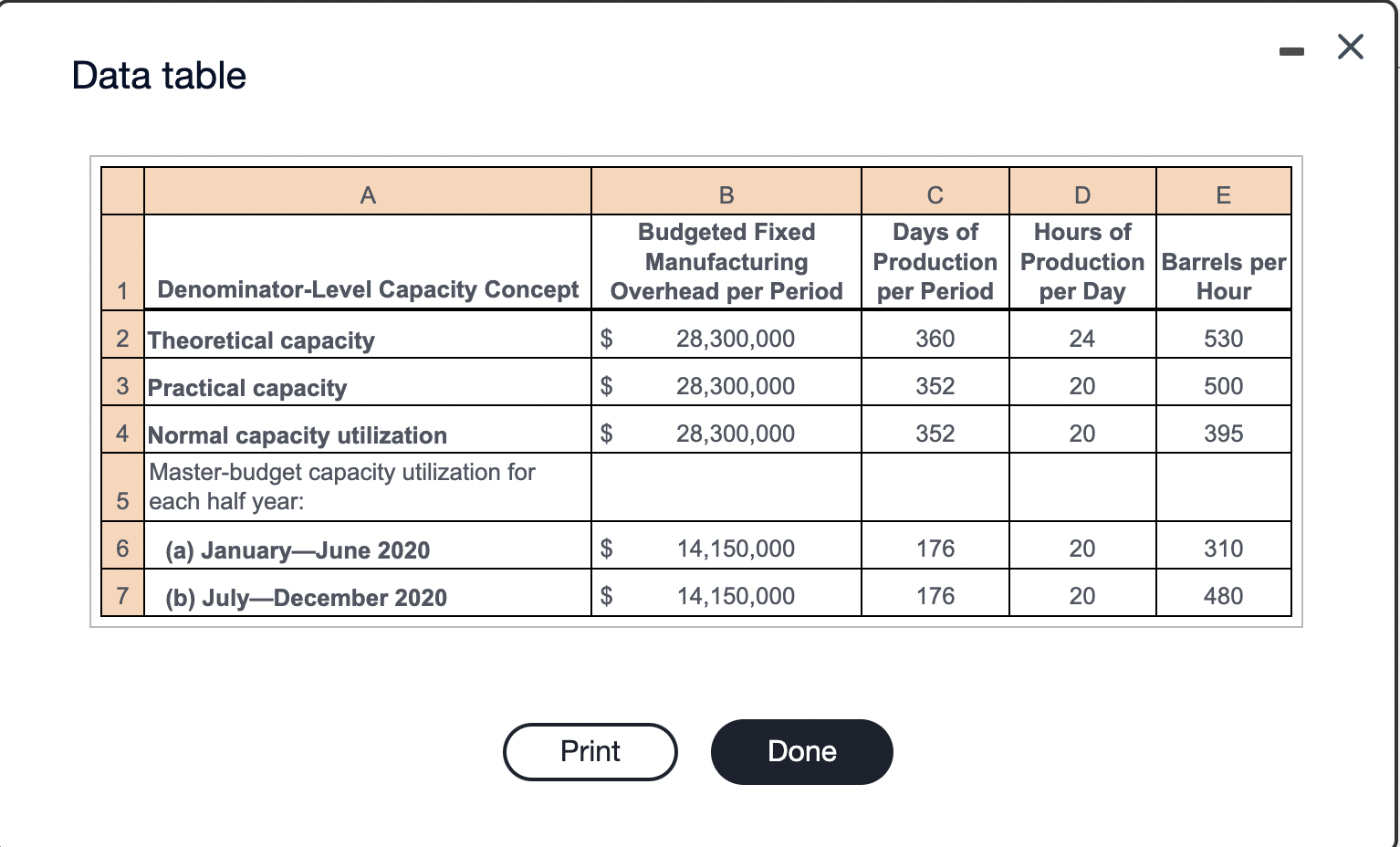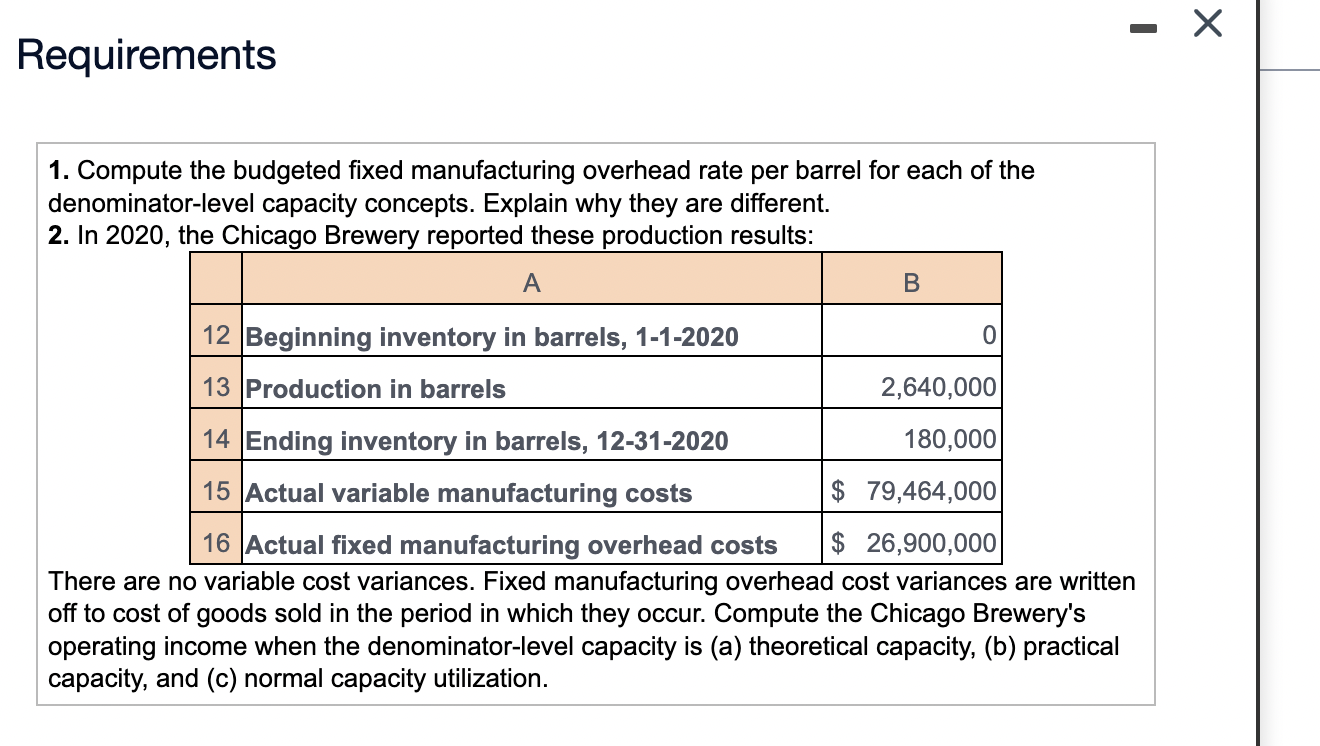




Zing Lager has just purchased the Chicago Brewery. The brewery is 2 years old and uses absorption costing. It will "sell" its product to Zing Lager at $44 per barrel. Peter Bryant, Zing Lager's controller, obtains the following information about Chicago Brewery's capacity and budgeted fixed manufacturing costs for 2020: (Click the icon to view the information.) Read the requirements. Requirement 1. Compute the budgeted fixed manufacturing overhead rate per barrel for each of the denominator-level capacity concepts. Explain why they are different. Begin by determing the formula to calculate the budgeted fixed manufacturing overhead rate per barrel, then compute the rate for each of the denominator-level capacity concepts. (Abbreviations used: Budg. = budgeted, MOH = manufacturing overhead. Round the rates to the nearest cent.) Theoretical capacity Practical capacity S Normal capacity utilization $ S Budg, fixed MOH per period + Budg, denominator level (barrels) = 28,300,000 + 28,300,000 + 28,300,000+ Master-budget capacity for each half year: (a) January-June 2020 S (b) July-December 2020 S Explain why they are different. The theoretical and practical capacity 14,150,000 + 14.150,000+ Budgeted fixed MOH rate per barrel 4,579,200 S $ 3,520,000 2,780,800 $ $ 1,091,200 1,689,600 S 6.18 8.04 10.18 12.97 8.37 concepts emphasize supply factors, while normal capacity utilization and master-budget utilization concepts emphasize demand factors. The six-month rates for the master-budget utilization concept are different because of seasonal differences in budgeted production. Requirement 2. Compute the Chicago Brewery's operating income when the denominator-level capacity is (a) theoretical capacity, (b) practical capacity, and (c) normal capacity utilization. Begin by completing the following table to help you compute the operating income for each denominator-level capacity concept. (Round the rates to the nearest cent.) Denominator-level capacity concept Budgeted fixed MOH rate per barrel Per barrel Budgeted variable mfg cost rate 6.18 $ 8.04 10.18 Theoretical capacity Practical capacity Normal capacity utilization Now compute the operating income for each capacity concept, one at a time. Label the variances as favorable (F) or unfavorable (U). (Enter a "0" for any zero balance accounts.) Budgeted total mfg cost rate 30.10 $ 30.10 30.10 Fixed MOH costs allocated 16,315,200 21,225,600 26,875,200 36.28 $ 38.14 40.28 Now compute the operating income for each capacity concept, one at a time. Label the variances as favorable (F) or unfavorable (U). (Enter a "0" for any zero balance accounts.) Theoretical capacity 108240000 Revenues Cost of goods sold Beginning inventory Variable manufacturing costs Fixed manufacturing overhead cost allocated Cost of goods available for sale Deduct ending inventory Adjustment for variances Cost of goods sold Gross margin Other costs Operating income 0 79,464,000 16,315,200 95779200 Data table 1 Denominator-Level Capacity Concept 2 Theoretical capacity 3 Practical capacity 4 Normal capacity utilization Master-budget capacity utilization for 5 each half year: 6 (a) January-June 2020 7 (b) July-December 2020 B Budgeted Fixed Manufacturing Overhead per Period 28,300,000 28,300,000 28,300,000 $ $ $ $ Print 14,150,000 14,150,000 Done C Days of Production per Period 360 352 352 176 176 D Hours of Production Barrels per per Day Hour 24 530 20 500 20 395 E 20 20 310 480 Requirements 1. Compute the budgeted fixed manufacturing overhead rate per barrel for each of the denominator-level capacity concepts. Explain why they are different. 2. In 2020, the Chicago Brewery reported these production results: A 12 Beginning inventory in barrels, 1-1-2020 13 Production in barrels 2,640,000 180,000 14 Ending inventory in barrels, 12-31-2020 15 Actual variable manufacturing costs $ 79,464,000 $ 26,900,000 16 Actual fixed manufacturing overhead costs There are no variable cost variances. Fixed manufacturing overhead cost variances are written off to cost of goods sold in the period in which they occur. Compute the Chicago Brewery's operating income when the denominator-level capacity is (a) theoretical capacity, (b) practical capacity, and (c) normal capacity utilization. B I 0 X











